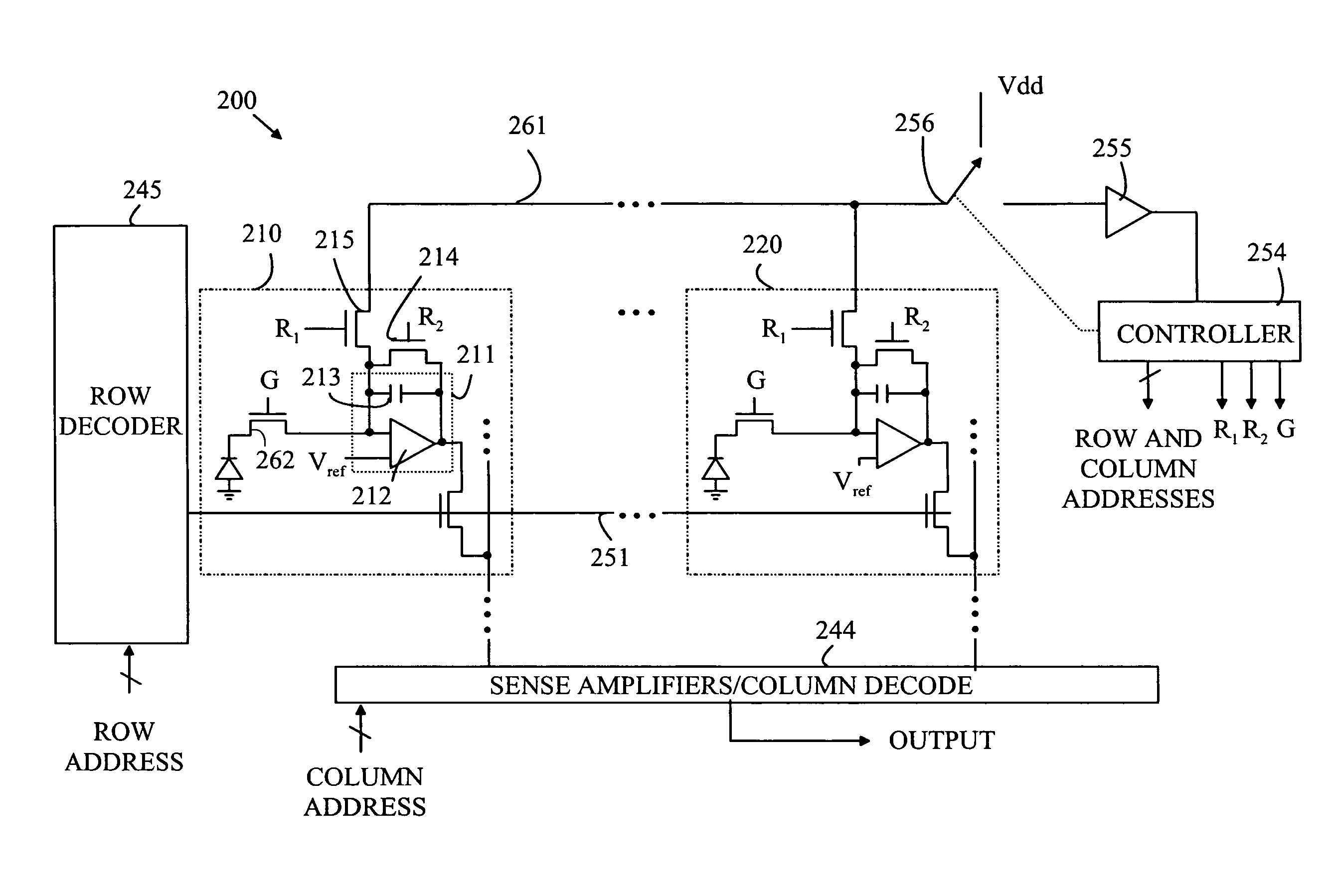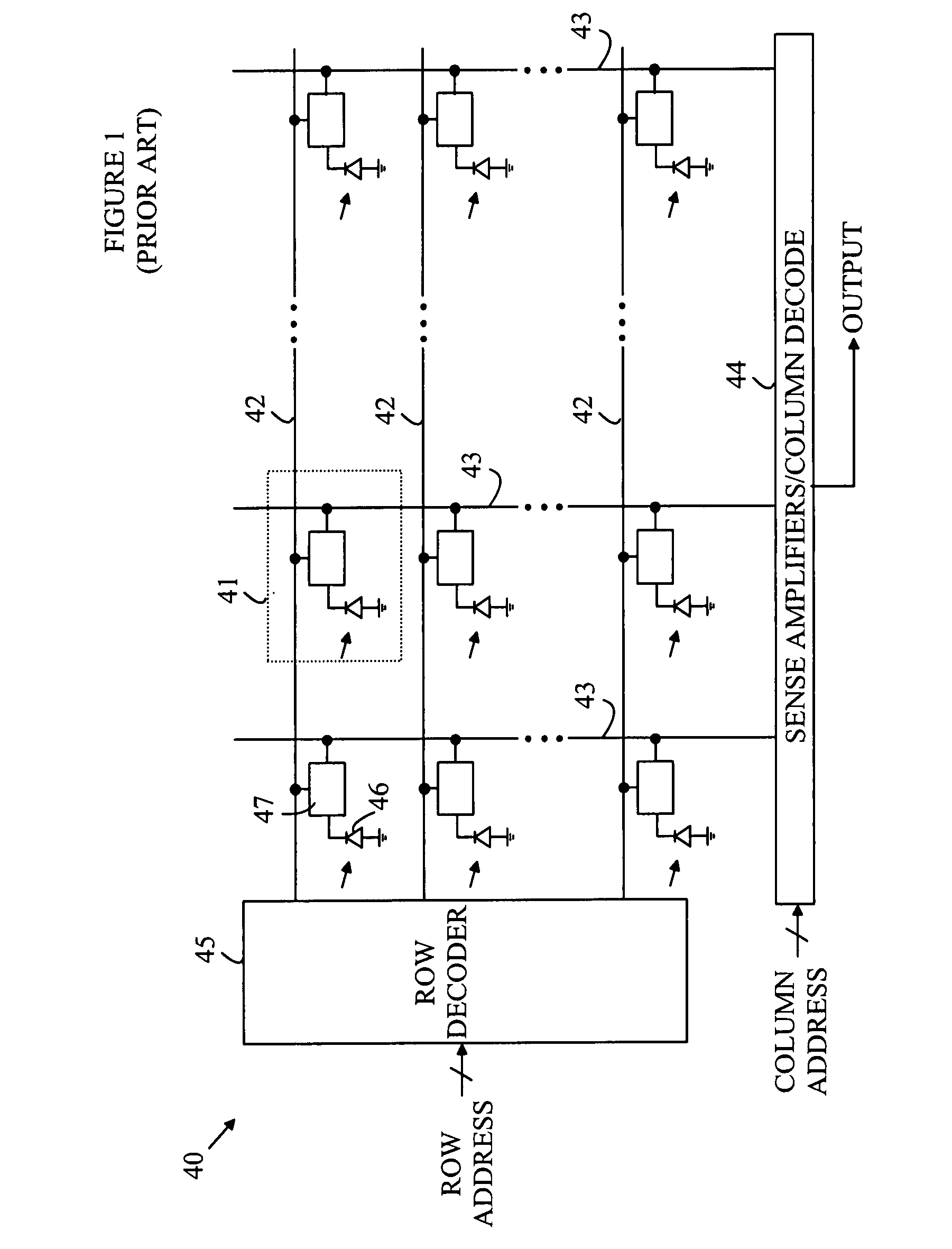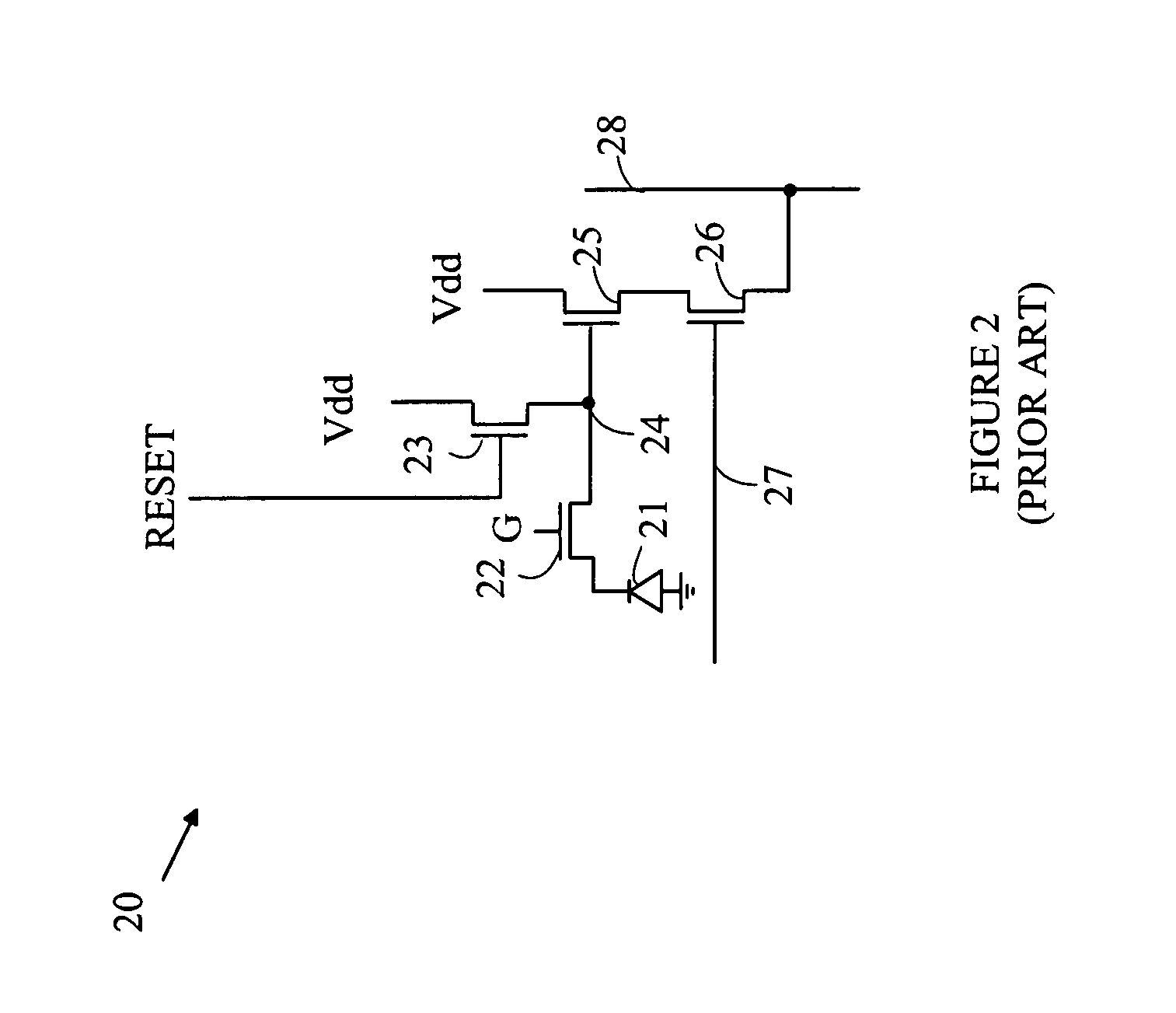Self-Triggering CMOS Image Sensor
a self-triggering, image sensor technology, applied in the direction of color television details, television system details, television systems, etc., can solve the problems of increasing the exposure of patients without generating a useful image, non-zero dark current, and inconvenient us
- Summary
- Abstract
- Description
- Claims
- Application Information
AI Technical Summary
Problems solved by technology
Method used
Image
Examples
Embodiment Construction
[0018]The manner in which the present invention provides its advantages can be more easily understood with reference to FIG. 1, which is a schematic drawing of a prior art CMOS imaging array. Imaging array 40 is constructed from a rectangular array of pixel sensors 41. Each pixel sensor includes a photodiode 46 and an interface circuit 47. The details of the interface circuit depend on the particular pixel design. However, all of the pixel sensors include a gate that is connected to a row line 42 that is used to connect that pixel sensor to a bit line 43. The specific row that is enabled at any time is determined by a row address that is input to a row decoder 45. The row select lines are a parallel array of conductors that run horizontally in the metal layers over the substrate in which the photodiodes and interface circuitry are constructed.
[0019]The various bit lines terminate in a column processing circuit 44 that typically includes sense amplifiers and column decoders. The bit ...
PUM
 Login to View More
Login to View More Abstract
Description
Claims
Application Information
 Login to View More
Login to View More - R&D
- Intellectual Property
- Life Sciences
- Materials
- Tech Scout
- Unparalleled Data Quality
- Higher Quality Content
- 60% Fewer Hallucinations
Browse by: Latest US Patents, China's latest patents, Technical Efficacy Thesaurus, Application Domain, Technology Topic, Popular Technical Reports.
© 2025 PatSnap. All rights reserved.Legal|Privacy policy|Modern Slavery Act Transparency Statement|Sitemap|About US| Contact US: help@patsnap.com



